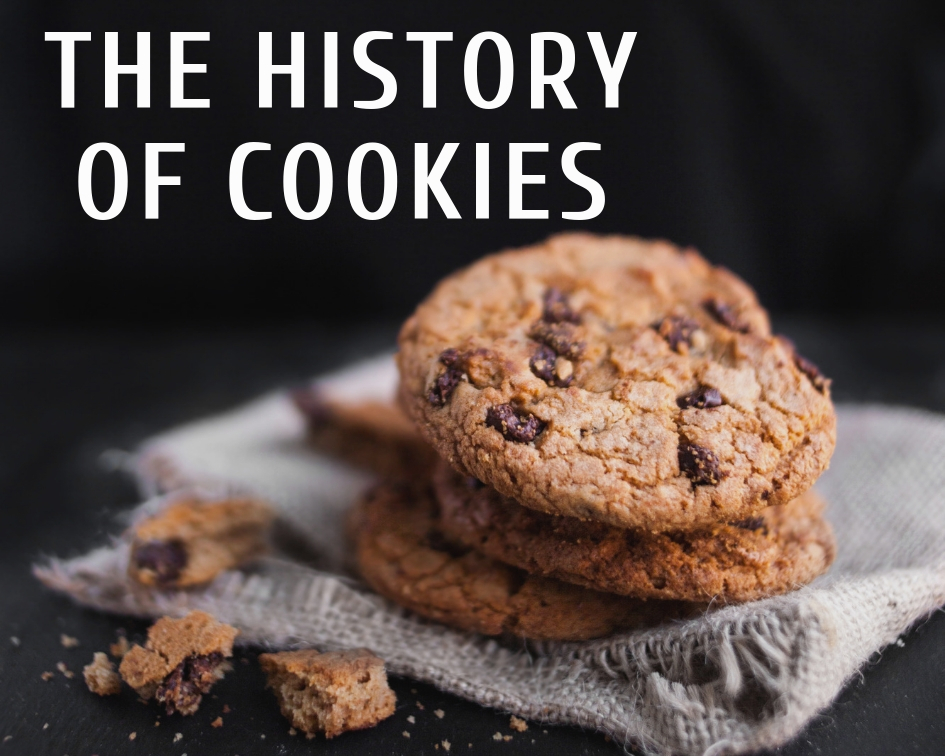Who doesn’t love a cookie? They are a staple at bake sales and the perfect accompaniment to a cup of coffee or tea. We thought it would be fun to take a look at the origins of cookies and highlight how a few of our favorites came to be.
The History of the Cookie
7th Century A.D.
The history of the cookie begins with the cultivation of sugar in 7th century Persia. Luxurious cakes and pastries were a well-known indulgence of the incredibly wealthy Persian empire. During the crusades and development of the spice trade, sugar spread through the Mediterranean and then to Northern Europe. As the use and availability of sugar spread across the globe, so did the cooking techniques and recipes from Persia.
14th Century
By the 14th-century wafer-like cakes could be purchased in Paris.
15th Century
The first known cookbook called Goode Huswife’s Jewel by Thomas Dawson with a cookie recipe was published.
16th – 17th Century
Tea cakes became very popular in Europe. These butter cookies closely resembled today’s shortbread cookie, but with less sugar. They were not quite as sweet as your traditional cookie. Instead, they were richer and more buttery. As the Dutch settled in America, they brought koeckjes (their version of this cake that was later Americanized to be spelled cookie) with them. The first reference to a cookie in America is 1703 when it was served by the Dutch at a funeral in New York.
The History of Famous Cookies
Animal Cookies: There have been 37 varieties of animal cookies since 1902. Currently, the box of cookies includes 17 types of animals like tigers, camels, kangaroos, zebras, elephants, bears, monkeys, and giraffes.
Biscotti: Bis meaning twice and cos meaning cooked in Italian, literally translates to twice baked. These cookies were initially for the seaman who traveled long voyages. The low moisture content made them like a sweet cracker that would last months while the men were away at sea. Today, they are traditionally paired with hot beverages such as tea or coffee.
Chocolate Chip Cookie: Famously invented by Ruth Wakefield who ran the Toll House Restaurant in Massachusetts. Eventually, the rights of the recipe trademark were sold to Nestle.
Fig Newtons: Made possible by inventor James Henry Mitchell who invented the duplex dough-sheeting machines and funnels that made the jam-filled cookies possible.
Fortune Cookies: Cookies with a fortune written on the inside were first handed out to the homeless in Los Angeles with words of encouragement and hope on them. The Hong Kong Noodle Company was founded with the intention of mass producing them. As machinery improved, the Lotus Fortune Cookie Company in San Francisco was eventually able to invent equipment that could fold the cookies in half the time. It’s unsure where fortune cookies were first made in America.
Ladyfinger: Oval-shaped cookies or cakes which originated in France in the 1100’s and are popular around the world. The recipe has changed little since then and the majority in the United States are produced by Specialty Bakers in Pennsylvania.
Macaroons: Made from whipped egg whites, it’s a soft and chewy cookie with a crispy exterior. They date back to 1792 in an Italian monastery. In the US, coconut is the most common flavor, but you may also find them with almonds and chocolate.
Peanut Butter Cookies: In the early 1930’s Pillsbury’s Balanced Recipes by Mary Ellis Ames, Director of the Pillsbury Cooking Service, contains a recipe for Peanut Butter Balls. Instructions include rolling the dough into balls and pressing the fork down on the cookie in a crisscross pattern.
Snickerdoodles: Also known as cry babies are coated in cinnamon sugar before being baked. They originated in the New England states and only became popular in the last 100 years or so. No one knows why they were named this and it’s assumed that the cooks gave funny names to recipes for the pure fun of saying the name.
